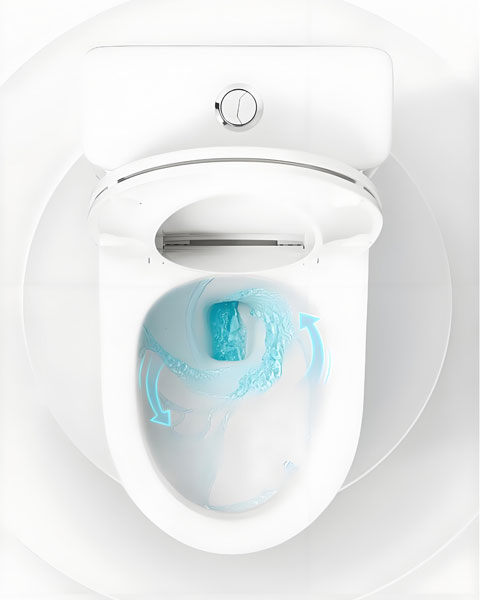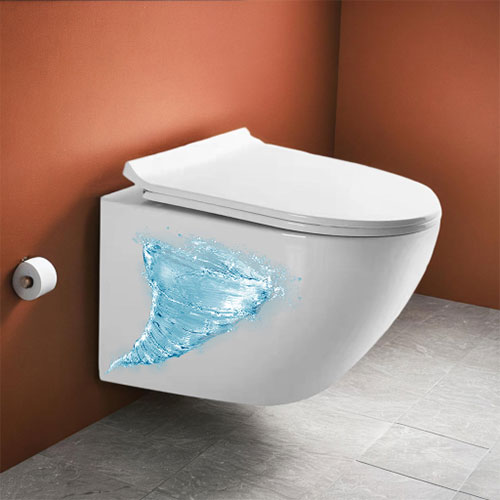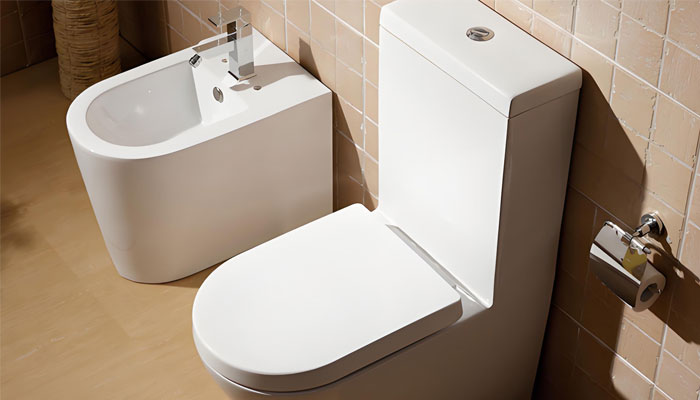Toilets are essential fixtures in every modern home, business, or public facility, and understanding the grading system, particularly the “AB” grade, can help you choose the best toilet for your needs. The “AB grade” terminology is typically associated with the quality and standards of toilets based on various factors such as material, design, performance, and durability. The exact definition of “AB grade” can vary depending on the manufacturer or the country, but here’s a comprehensive guide to identifying AB-grade toilets.
1. Understanding the Toilet Grading System
Toilet grades often refer to the classification of toilets based on their build quality, features, and how well they meet industry standards. In many countries, there is a grading system for toilets to ensure that they meet specific sanitary and quality standards. Toilets can be graded from A to C or similar scales, where “A” is considered premium quality, and “C” is the lowest acceptable standard. The “AB” grading could be interpreted in a few ways depending on the context.
- Grade A: Refers to high-quality toilets that meet international standards for efficiency, comfort, and longevity.
- Grade B: This grade typically refers to toilets that have fewer features, might use lower-quality materials, or have slightly lower standards but are still functional and acceptable.
When combined, AB-grade toilets might refer to products that combine both high-quality construction (Grade A) with a few practical compromises or simpler design features (Grade B). However, the term is not universally standardized, so it’s important to investigate each manufacturer’s specific grading system.
2. The Materials Used
One of the first factors to consider when identifying the grade of a toilet is the materials used. Higher-grade toilets typically use better materials for the construction of both the bowl and the tank.
- Ceramic: Most toilets, especially higher-end models, are made of vitreous china, which is a smooth, durable, and non-porous material. A high-quality Grade A toilet will be made from solid, high-density ceramic, while a Grade B toilet might use a cheaper or lower-density ceramic.
- Porcelain: The best toilets are typically porcelain-coated, ensuring that they are easy to clean and resistant to staining. Lower-grade toilets may have a thinner coating or use a lower-quality porcelain, which may wear over time.

Ceramic-raw-materials
3. Flushing Mechanism and Efficiency
Flushing performance is one of the most crucial aspects of a toilet’s grade. The flushing system’s efficiency and water usage can greatly impact both the functionality and environmental footprint of a toilet.
- Grade A toilets typically feature advanced flushing technologies, such as dual-flush systems, pressure-assisted flushes, or gravity-flush systems that use minimal water but still provide effective waste removal. These systems are designed to reduce water consumption without sacrificing performance.
- Grade B toilets may still provide decent flushing performance, but their designs might not incorporate the latest technologies or water-saving innovations. These toilets might require more water per flush or may be less efficient in waste removal.
The grade can often be identified by checking the flush rate (measured in gallons per flush, or GPF) and comparing it to standard benchmarks. Toilets with a 1.28 GPF or lower are often considered water-efficient and may be graded higher.

Rimless-flush-toilet
4. Design and Aesthetics
The design of a toilet affects its grade, with higher-grade toilets offering sleek, modern designs and additional comfort features, such as elongated bowls, ergonomic seating, and soft-close seats. Higher-end toilets also tend to have smooth, curved lines and finishes that are easier to clean.
- Grade A toilets will feature modern design elements, including contemporary finishes (like matte, gloss, or even custom colors) and innovative features, such as self-cleaning surfaces.
- Grade B toilets might have more traditional designs, simpler contours, and fewer design enhancements. They may lack certain finishing touches, such as soft-close lids or anti-bacterial coatings.
5. Comfort Features
The overall comfort of a toilet is another important aspect of grading. Higher-grade toilets tend to emphasize user comfort with features such as:
- Ergonomically designed bowls that suit various body types
- Comfort-height toilets that are easier to sit on and stand up from
- Slow-close toilet seats that prevent slamming
Grade A toilets are more likely to have these comfort features, while Grade B toilets might have simpler or more basic seating options.
6. Durability and Warranty
Durability is often an indicator of a higher-grade toilet. Toilets made from stronger materials that resist cracking, chipping, or discoloration are typically of higher quality.
- Grade A toilets often come with longer warranties, sometimes extending up to 10 years or more, reflecting the manufacturer’s confidence in the product’s durability.
- Grade B toilets, while still durable, might come with a shorter warranty (e.g., 1-3 years) and could be more prone to wear and tear due to lower-quality materials or construction.
7. Cost vs. Value
Cost can also be an indicator of toilet grade. Grade A toilets tend to be more expensive due to higher-quality materials, better design, and more efficient performance. On the other hand, Grade B toilets are more affordable but might sacrifice some premium features or long-term durability.
8. Certifications and Standards
Another way to determine the grade of a toilet is by looking for certifications from recognized regulatory bodies. For example:
- WaterSense Certification: Toilets with this certification are designed to meet specific water-saving standards.
- ANSI/ASME Standards: Toilets that meet these standards are certified for quality and performance.
Grade A toilets often feature these certifications, while Grade B toilets might not.
9. Conclusion
Identifying the AB grade of a toilet involves looking at multiple factors, including materials, flushing performance, design, comfort features, durability, cost, and certifications. The “AB” grade usually refers to a product that offers a balance of both premium and basic features, providing solid performance without all the bells and whistles of top-tier models. When choosing a toilet, it’s important to prioritize your specific needs, such as water efficiency, comfort, and long-term durability, while considering your budget.
FOHOME specialized in sanitary ware for 15 years,with the 3 tunnel kilns with annual supply capacity of 2,500,000pcs and quality control system covering raw material/semi and finished product/packing etc.We hope to find a way to cooperate with you.
Contact Us:
Tel:+86 13937950777
Whatsapp:008613937950777
Email:annie@fohomeceramics.com


